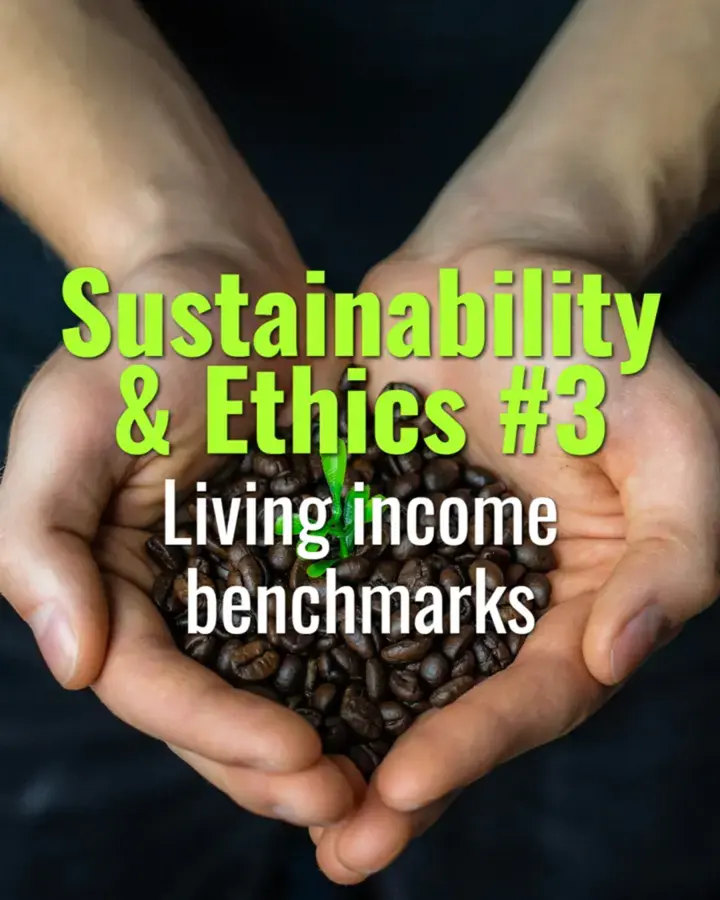Living income benchmarks
What living income benchmarks mean in the coffee sector, how they are calculated, and why they matter for farmer sustainability and ethical sourcing.
- Coffee Basics Nerds
- 2 min read
Article 3 of 12 in Sustainability & Ethics/

What is a Living Income?
- A living income is the net income a household needs to afford a decent standard of living.
- Covers basic needs: food, water, housing, education, healthcare, transport, and savings.
- Goes beyond poverty lines—focuses on dignity and long-term well-being.
Living Income Benchmarks
- Calculated by NGOs and research bodies (e.g., Living Income Community of Practice, Fairtrade, IDH).
- Based on local cost-of-living studies in producing countries.
- Expressed as a target income per household or per hectare.
Why It Matters in Coffee
- Coffee farming households often earn well below living income benchmarks.
- Global market volatility means farmgate prices rarely cover production costs.
- Sustainability claims are incomplete unless farmer livelihoods are viable.
Use in Sourcing Practices
- Benchmark Comparison: Buyers compare actual farmgate earnings vs benchmark.
- Price Interventions: Roasters, importers, and certifications set minimum prices or premiums linked to benchmarks.
- Income Diversification: Encouraging farmers to diversify crops or income streams to close gaps.
Challenges
- Data Gaps: Benchmarks vary regionally; not always available for every producing area.
- Implementation: Paying above-market prices may strain roaster competitiveness.
- Scaling: Small roasters may struggle to influence systemic income gaps.
Examples
- Fairtrade International incorporates living income benchmarks into its minimum price setting.
- IDH (Sustainable Trade Initiative) publishes country-specific coffee benchmarks (e.g., Uganda, Colombia).
Summary
Living income benchmarks define the minimum income required for coffee farmers to live with dignity. By comparing farmgate prices against these benchmarks, the coffee industry can measure and address inequities, making sustainability truly farmer-centered.